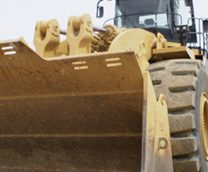Caterpillar is using artificial intelligence in its product-development process to simulate how operators might use a machine, cutting time out of the entire process, said chief analytics director Morgan Vawter in a recent Cat podcast.
Caterpillar uses virtual reality in its design engineering, Vawter said, and the AI tool uses “reinforcement learning” to simulate how an operator might use a machine instead of telling the design model how the machine might perform.
“Ultimately, that model gives us the power to reduce some of the steps in the product-development process and also makes sure we’re hitting better (product) quality because we’re seeing the full landscape of how an operator might use a machine without physically having to test it,” she said.
“Analytics is truly enabling our business end-to-end in many different ways,” Vawter said. “It’s aligned closely to the profitable growth goals of our business units and industry segments. When we say growth, it’s all based on the ROI we see on the value and the potential ROI that we see in the future from all the data that we’re collecting.”
Vawter described value from the perspective of Cat’s customers and the corporation itself. Customers benefit from data analytics with lower total cost of ownership, improved productivity, and improved safety.
“For Caterpillar, it helps us get closer to customer needs, be more responsive and adaptive, make more data-driven decisions, and improve processes like (product development),” she said.
Vawter said the company has increased its talent pool in the analytics arena by 20 to 25 percent in the past couple of years, citing the opening of its downtown Chicago office as a means to attract talent and work with local partners.

